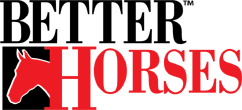When a farrier shoes the horse, all of the weight is placed on the hoof wall. When the
horse moves, the coffin bone and sole are moving downward toward the ground. This
creates more stress on the already inflamed lamina. The goal is to minimize stress, and
support the bone column and sole. During this phase the hoof care team strives to relieve
the stress between the hoof wall and the lamina. The most effective way to do that is to
protect the hoof with a pad or a pour-in pad. These packages are designed to increase
surface area for weight bearing so that the sole can take on some of the horse’s weight,
and not just the hoof wall. Historically, it was thought that anything you put underneath a
pad would help protect and cushion the sole of the horse. This, however, is not always the
case. For instance traditional silicone from the hardware store has been used under a pad,
despite some of its challenges. Some drawbacks of traditional silicone include:
a long set time of 24 hours
messy application
the acid-base can leave a smelly residue.
the material does not absorb concussions, sending the pressure up the horse’s leg.
The best alternative to traditional pads and silicone filling is a liquid pour-in pad made of
urethane adhesive. Products like Vettec’s Equi-Pak offer a versatile solution that is easy
to apply, sets quickly and produces a soft, resilient supportive pad material. Advantages
of pour-in pad materials include:
an immediate bond to the sole, sealing out moisture and debris.
the pour-in pad material can be filled to ground level for maximum support and
effectively absorbs concussion, instead of sending it up the leg like silicone
products.
support to the boney column by loading the entire solar surface with a pour-in
pad, but also positions the weight-bearing load over the entire ground surface and
not just the wall. This reduces the “pull” on the lamina between the hoof wall and
internal structures resulting in a faster recovery and a more comfortable horse.
Modern liquid pad materials come in different levels of firmness so they will match the
needs of the individual horse. The pad materials can be poured to ground level. Even on
hard ground, the sole frog and hoof wall bear equal weight. The pads can be customized
so that if you do not want to cover an area that may be sensitive, it can be blocked out.
Even if the whole sole cannot be covered, a half pad is 50% more support than not having
any.
Conclusion
Managing a horse’s acute Founder or Laminitis can be a challenge, and it’s important to
have a good team in place to diagnose, manage the treatment and ensure recovery of the
equine athlete. There are a number of treatments on the market today, but consider ones
that will help relieve the internal stresses within the hoof capsule and support the boney
column, providing a speedier recovery and a more comfortable horse. Using liquid pad
technology, veterinarians and farriers now have the ability to use materials that will bond
to the foot and withstand the weight of the horse.
